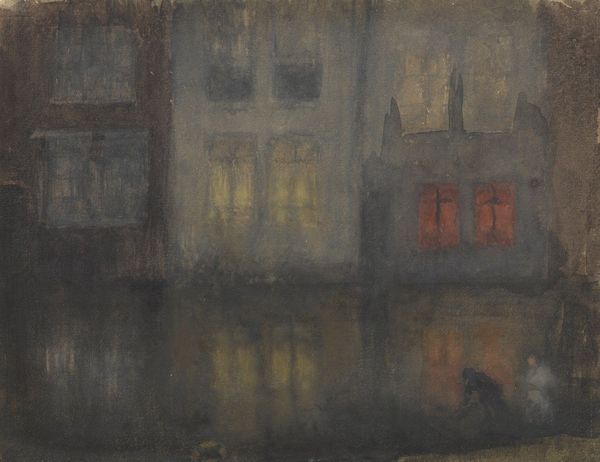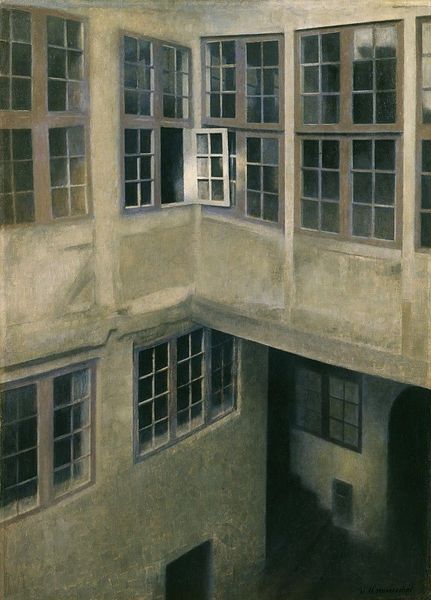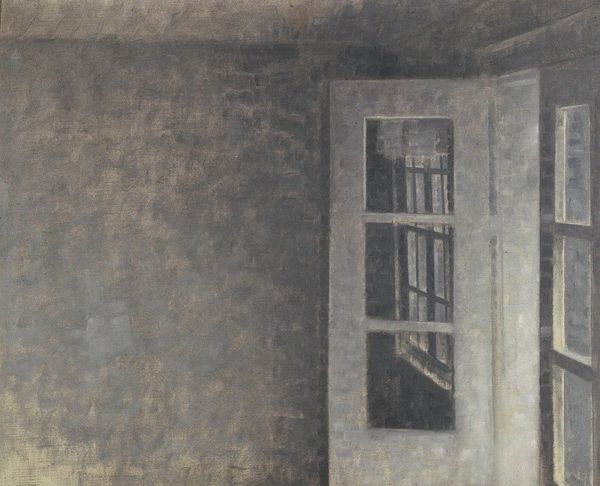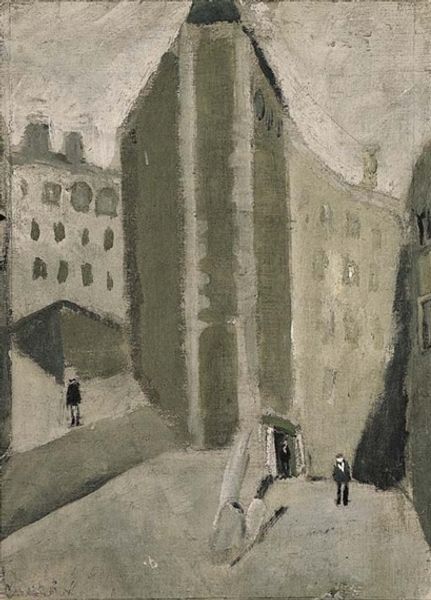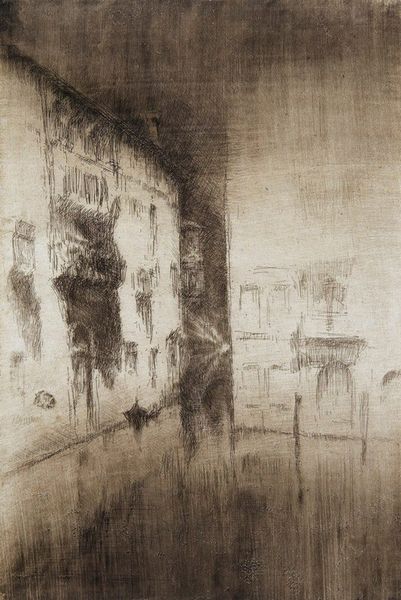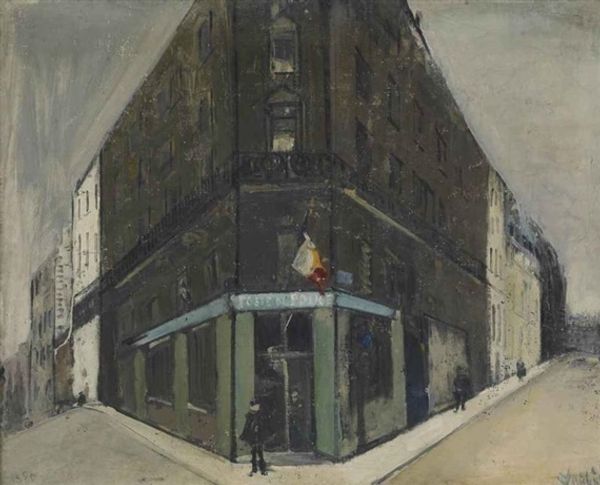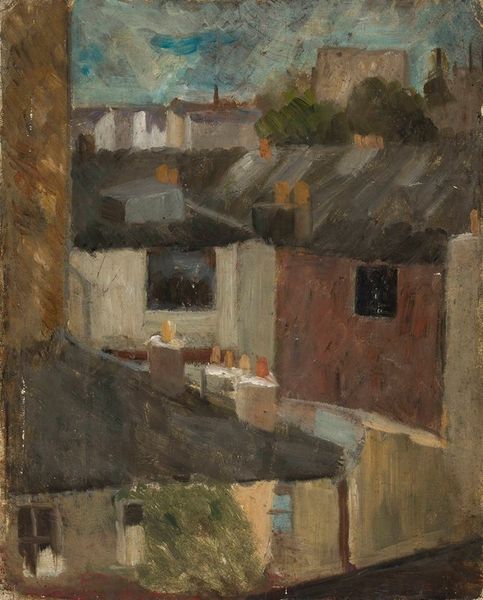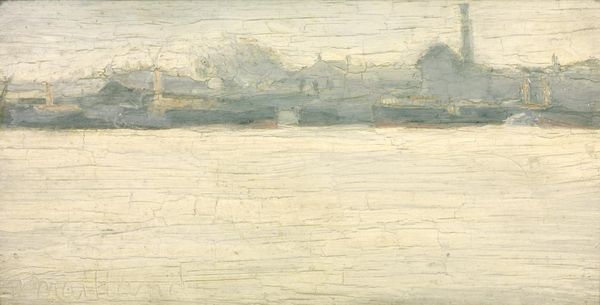
painting, oil-paint
#
painting
#
oil-paint
#
landscape
#
intimism
#
symbolism
#
cityscape
#
mixed medium
#
mixed media
#
watercolor
#
realism
Copyright: Public Domain: Artvee
Curator: Vilhelm Hammershoi's "The Old Warehouse In Christianshavn" presents us with a rather austere view. What's your immediate impression? Editor: Bleak, deliberately so, I think. It’s muted—almost monochromatic. You can feel the damp air, the silence of a port building shut down for the day, or maybe permanently. It speaks to abandonment or, at best, subdued activity. Curator: Indeed. Look at how Hammershoi employs oil paint. See the visible brushstrokes, the layered application that creates texture on the warehouse facade and the cobblestone ground. There’s a raw quality that hints at the very physicality of the building’s construction. This wasn’t about refined polish, it was about work. Editor: And consider where he situates us, the viewer. We're at a remove. There's the wall creating a barrier to the activity we only get hints of in the masts of ships, making this picture an observation of a certain socio-economic background in Copenhagen around the turn of the century. These warehouses fueled an empire. Curator: I find his realism laced with symbolism intriguing; Hammershoi does not include figures, imbuing ordinary settings with melancholy, exploring inner spaces and outward appearances through built structure. Think of what went on behind the facade: the exploitation of labor, the distribution of goods. He forces us to consider the conditions and contexts in which these ordinary looking structures would thrive and become a backbone to empires and small families. Editor: Precisely, and it's crucial to acknowledge that galleries and museums have traditionally valorized artwork disconnected from everyday struggles or industrial narratives. Here, though, the aesthetic impact can spark conversations around history, labor, trade policies, even gentrification. The image functions almost as a public document or record. Curator: I concur. By grounding it in the tangible details of its making – its materials, its technique – the building comes alive, no longer mere architecture, but evidence of labor, evidence of process. It encourages a viewer to question who made what within these buildings and at what cost. Editor: It's less about admiration than critical engagement with the past. Food for thought on how images, history, and material existence are closely interwoven. Curator: A truly fascinating picture that forces us to confront an intricate intersection between technique, the making of something, and cultural representation, reminding us of the human effort that underpins even the stillest cityscapes. Editor: Agreed, it makes you question your perception of such architecture—it might prompt a deeper reflection about historical forces and those structures impact on today's society.
Comments
No comments
Be the first to comment and join the conversation on the ultimate creative platform.
